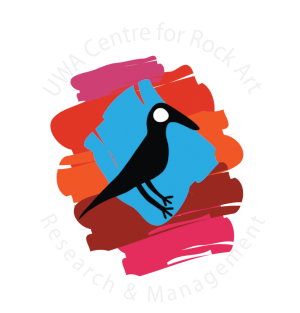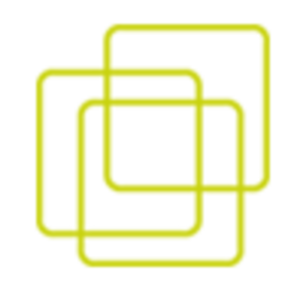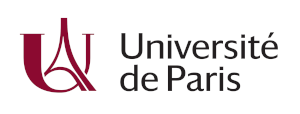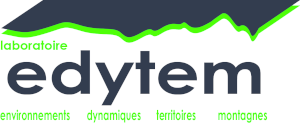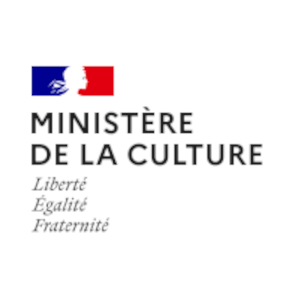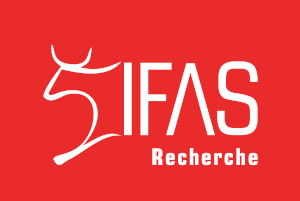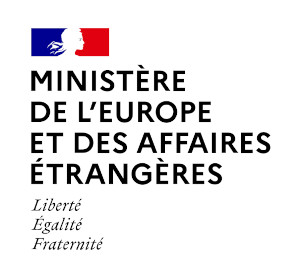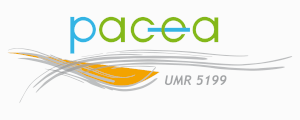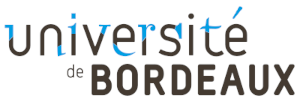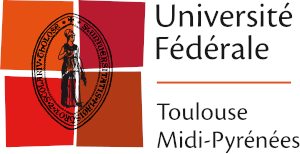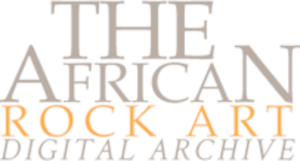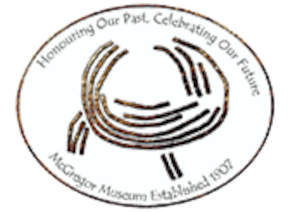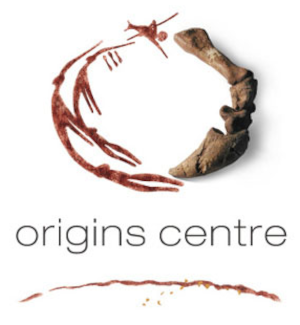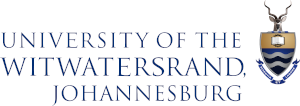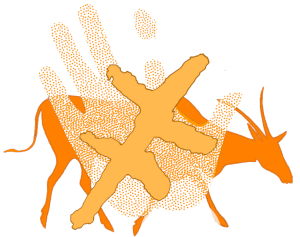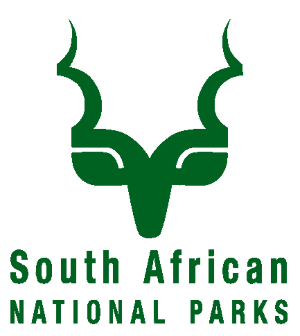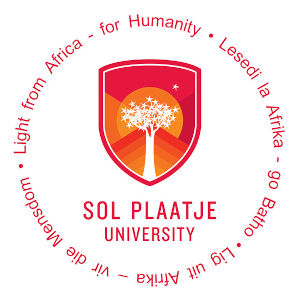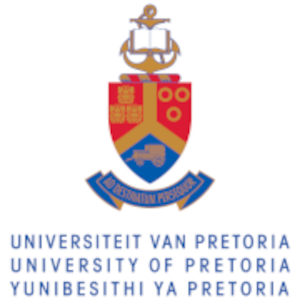The Team
The team includes more than 50 researchers and students from 17 scientific institutions in Australia, Namibia, France and South Africa
To achieve the aims of the project, COSMO-ART brings together a team of researchers and students from various scientific fields bringing expertise from archaeology, history, museology, human and social geography, cultural anthropology, geomorphology and materials science, with researchers from France, southern Africa and Australia. Building bridges between these scientific fields in order to go beyond disciplinary approaches and set up an interdisciplinary project bringing together the skills of southern Africa, Australia and France is a real challenge, very stimulating on an intellectual and human level.
COSMO-ART brings together 51 researchers and students.
Australia
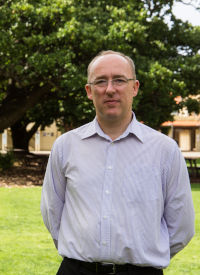
Benjamin Smith
I am a Professor of Archaeology (World Rock Art) at the University of Western Australia. I joined UWA Archaeology in 2013. My major research interests include theory and method in rock art studies, digital archiving in archaeology, rock art and identity, rock art dating, contextual approaches to the interpretation of meaning and motivation in rock art, and the role of rock art in modern societies. Before joining UWA I was director of the Rock Art Research Institute in South Africa (from 2000). I have supervised more than 30 postgraduate students and many have gone on to take up leading jobs in the field and to become prolific publishers. I was the draftsperson of the South African Transformation Charter for Archaeology in 2008 and the South African National Policy on Archaeology and Palaeontology in 2011. I have published extensively on rock art from Africa and Australia. I am current President of the ICOMOS International Scientific Committee for Rock Art.
Namibia
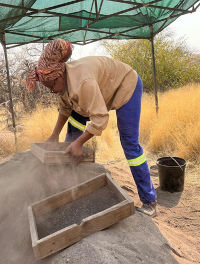
Kaarina Shagwanepandulo Efraim
I am a Curator for archaeology at the National Museum of Namibia in Windhoek. As a curator for the archaeological collection, part of my day-to-day responsibilities are: collection management and curation of archaeological objects, managing access to the archaeological collection, carrying out field excavations and carrying out outreach programmes with schools, university students. The major part of my job is to carry out research and develop conservation strategies for archaeological heritage in the collection. My research focuses on aspects of public archaeology and using archaeological collections to engage and educate the public. My research interest is mainly in creating methodologies to address to decolonisation of archaeology. I hold a BA in History and Sociology from the University of Namibia, Post Graduate Diploma in Education from IUM and an MA in Archaeology the University of Pretoria. I am currently pursuing a PhD in archaeology.
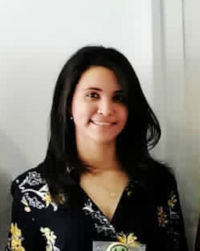
Lenishwa Engelbrecht
Lenishwa Engelbrecht is an Archaeologist at the National Heritage Council of Namibia (NHC). With a specialization in Bioarchaeology, her main focus is on the evolution of human physiology and behaviour in relation to cultural practices. However, her current occupation has entailed her to venture into a number of archaeological topics, such as rock art, stone tools, palaeontology, anthropology and even tourism around the whole of Namibia.
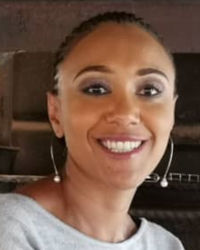
Emma Haitengi (nee Imalwa)
I received my Master of Science Degree from Muséum National d’Histoire Naturelle, in France (2009) and my Doctorate from the University of Tras-os-Montes e Alto Douro in Portugal (2016). I worked as the curator of archaeology at the National Museum of Namibia (2009-2017), then moved to the University of Namibia in 2017. I currently work as lecturer in the Department of Humanities and Arts and serve as head of the History Section in the department. I teach several courses in archaeology, history and cultural heritage management. My research interests are situated in the field of archaeology, cultural heritage management, history and museum curation. I am currently serving as a member of the Nomination and Evaluation Committee of the National Heritage council of Namibia.

Nzila Marina Libanda-Mubusisi
Ms Nzila Marina Libanda-Mubusisi is a heritage professional, researcher, cultural economist and a human resources professional. She is currently working as the Chief Curator for Social Sciences: the National Museum of Namibia, Ministry of Education, Arts and Culture. Ms Mubusisi has successfully coordinated and completed strategic objectives related to ensuring the acquiring, retaining and managing the museum collection for the uses in research, conservation, education, exhibiting and preservation of Namibian cultural and natural heritage for the current and future generation. Ms Mubusisi served as a focal person and project Administrator for the Oranjemund Shipwreck Project aimed at establishing the Underwater Museum and Research Center in Oranjemund, /Karas Region. Ms Mubusisi is currently the focal person for the UNESCO Convention on the Protection of the Underwater Cultural.
Ms Mubusisi hold a Master in World Heritage and Cultural Projects for Development offered by the University of Turin in Italy,Postgraduate Diploma in Heritage Conservation and Management by the University of Namibia, Bachelor of Technology Degree obtained from the then Polytechnic of Namibia now (Namibia University of Science and Technology) and a Diploma in Human Resource Management Business Management Training College of Southern Africa, South Africa.
Ms Mubusisi research interest lie in Museology, Provenance Research, Conservation of cultural objects, Anthropology, Social Archaeology, Agriculture Anthropology, Biological, Cultural Agriculture and Linguistic branches, Underwater heritage, Cultural Economics and Development Strategies. She would like to connect with researchers, professionals and experts with similar research interests.
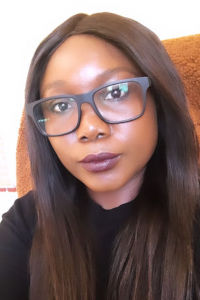
Alma Mekondjo Nankela
I am a Quaternary and Prehistorian researcher specialized in Namibian archaeology, in particular rock art heritage. I completed my undergraduate Degree in History and Geography from the University of Namibia in 2008. Right after, I earned the joint master’s and Ph.D. degrees in Quaternary and Prehistory from the Museum National d’Histoire Naturelle de Paris, France in cotutelle with the University of Ferrara, Italy between 2011 and 2017.
I have over 14 years of progressive research experience of which 10 years have been dedicated to the National Heritage Council of Namibia (NHC) in charge of Namibia’s entire archaeological resource base. Here, my responsibilities included the development, reviews and implementations of heritage policies and operational guidelines, overseeing the implementation, compliances, and integrations of UNESCO’s world heritage conventions into Namibia’s national heritage resources; commissioning scientific research; carrying out regular periodic monitoring, assessment and surveys and developing conservation plans as well as disseminating results at local and international audiences.
I have over 14 years of progressive research experience of which 10 years have been dedicated to the National Heritage Council of Namibia (NHC) in charge of Namibia’s entire archaeological resource base. Here, my responsibilities included the development, reviews and implementations of heritage policies and operational guidelines, overseeing the implementation, compliances, and integrations of UNESCO’s world heritage conventions into Namibia’s national heritage resources; commissioning scientific research; carrying out regular periodic monitoring, assessment and surveys and developing conservation plans as well as disseminating results at local and international audiences.
France

Leïla Baracchini
Leïla Baracchini is currently as a Swiss National Research Fund (SNF) postdoctoral fellow at San Research Centre, University of Botswana, where she studies the evolution of dances.
As part of the Cosmo-Art team, she did a postdoc with Éco-Anthropologie (UMR 7206) at the Muséum National d’Histoire Naturelle (Paris) and looked at the relationship between San local communities and rock art heritage sites.
She received her PhD in social anthropology and art theory (Quai Branly Thesis Price 2019) from the EHESS-Paris and the University of Neuchâtel in 2019. Her research focuses on the politics of representation and the processes of commodification and patrimonialisation in indigenous contexts. She explores these topics principally in Botswana, South Africa and in the French Lesser Antilles.

Juliette Barthélemy
My student background is a bit eclectic, having first done a double degree in Law and Political Science, then a degree in Art History, and now I’m in the first year of a research Masters in Archaeology: the Arts, Societies and Prehistoric and Protohistoric Environments (Europe, Africa) Masters (ASE2P) at the Jean Jaurès University in Toulouse.
As part of this Masters’ programme, I joined COSMO-ART for my research project where I am applying an epistemological approach to the study of rock art sites in the Karoo (South Africa) over the last century.
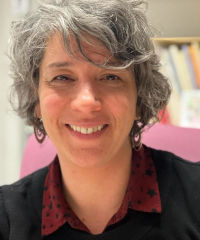
Nadia Belaïdi
Nadia Belaïdi is a CNRS senior researcher (HDR) at UMR Éco-anthropologie (MNHN, CNRS, Université Paris Cité), specialising in international and comparative environmental law and the anthropology of law. Her work focuses on the conceptualisation and experimentation of material ecological public order (the hierarchisation of nature as an essential social value). She investigates the conceptions of nature and the ways in which States, institutions and social groups manage the common good, based on the ways in which they standardise Man-Nature relationships – from practices to the creation of legal standards (conserved and protected areas, international negotiations). She works on the dynamics of conservation in southern Africa, Brazil and France, from the perspective of environmental justice and reconciliation (post-apartheid, racism, post-colonial), and approaches the Man-Nature relationship as a revelation of social relations.

Camille Bourdier
Specialized in the rock art of past hunter-gatherers’ cultures from Western Europe (French Palaeolithic) and Southern Africa (LSA in Zimbabwe and Limpopo), I’m a senior lecturer at the University of Toulouse Jean Jaurès, member of the TRACES laboratory, and honorary research fellow of the Rock Art Research Institute. My research mainly investigates deep-time dynamics in the imagery with regard to the environmental conditions and the other spheres of the material culture; the socio-cultural functions attributed to the rock art sites, the social structuring, and the rock art landscapes; the audiences and uses of the rock art; the symbolic relationships towards the animal world (imagery, materials).
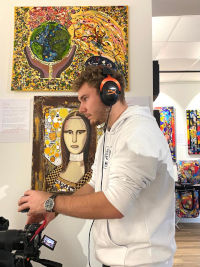
Lucas Bruchet
I am a multimedia student (BUT MMI) passing through the COSMO-ART project. Fascinated by the audiovisual since small, I was taken in training to realize a short film to report on the mission to Kimberley during the summer of 2023 as well as to provide support for all the graphic creation of the photovoice project.
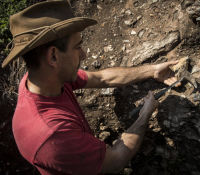
Laurent Bruxelles
Geologist and geomorphologist, I became a geoarchaeologist during my thesis. I am a caver and karstologist but the archaeological researches in which I was implied, both in France and abroad (South Africa, China, Ethiopia, Lebanon, Bulgaria, Djibouti, Iran, Morocco, Namibia, Belgium, Botswana , Mozambique…) led me to work in all geomorphological contexts (fluvial, volcanism, lacustrine, periglacial, colluvial systems and karst of course). Editorial board Geomorphology, P@lethnologie, Karstologia.
In COSMO-ART project, I am involved in the study of engravings context around Kimberley
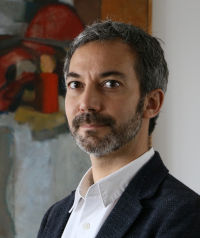
Benoît Caron
Benoît Caron is a Research Engineer at ISTeP Sorbonne Université, Faculté des Sciences et de l’Ingénierie since 2011. Volcanologist and geochemist, he is responsible of ALIPP6 geochemical laboratory. He develops new geochemical analytical methods: i) micro quantity of sample <0.1 mg; ii) halogens analyzis of Cl, Br and I by LA-ICP-MS/MS and Li-Be-B; iii) news methodological tephrostartigraphy process coupling SEM-EPMA and LA-ICP-MS/MS; iv) geochronology method Rb-Sr/U-Th-Pb/Lu-Hf.
He studies the reconstruction of eruptive history through multidisciplinary methods. He uses the tephrostratigraphy and the tephrochronology in marine and lacustrine archives to develop geochronological tool (Toba, Mayotte, Lesser Antilles, Italy…).
He is also involved in several research projects and PhD co-supervision where the geochemical signature of samples could answer scientific questions (ANR Color Sources (M. Lebon), MARS 2020 SuperCam, F. Pasquetti (Univ. di Pisa), G. Del Manzo (IPGP), T. Gyomlai (ISTeP)…).
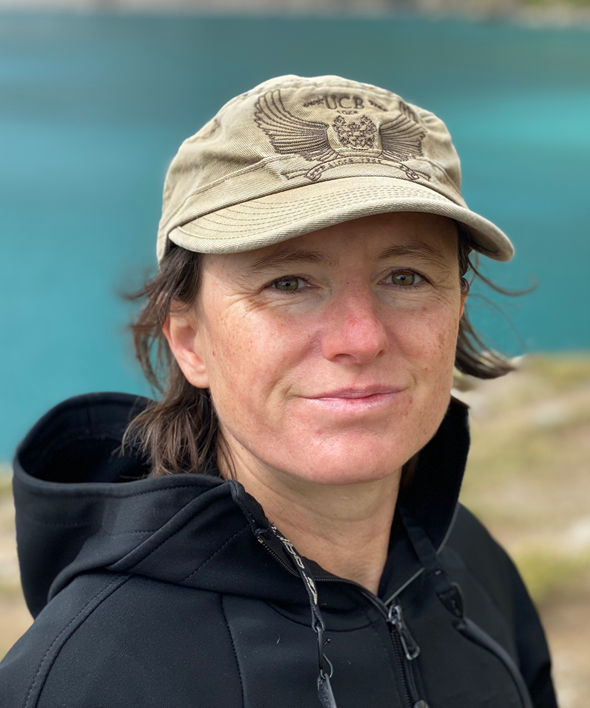
Émilie Chalmin
A specialist in archaeomaterials, Émilie Chalmin is a lecturer at the University of Savoie Mont Blanc and conducts her research in the EDYTEM laboratory (Research unit in environment, dynamics and territories of mountain areas, Le Bourget-du-Lac, France). She participates in the study of decorated sites from an integrative approach using both the questions of archaeologists and the views of other disciplines (geomorphology, sedimentology, dating, physics, geology …). It is a question of testing a clearly transdisciplinary vision to approach not only a line on the wall but a structured and complex object in its entirety at the scale of a rock shelter, a cave or a group of sites, placed in their geographical, geological and spatial environment. The use of physico-chemical methods in laboratory, on large instruments or directly on the wall (in situ) allows her to access the modes of preparation of the rock paintings as well as the problems of alteration of the wall in relation to the problems of conservation.
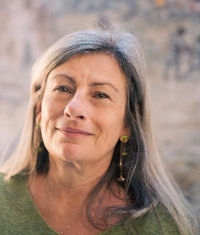
Catherine Cretin
Catherine Cretin is Chief Heritage Curator within the National Museum of Prehistory (Ministry of Culture, France) since 2017. She oversees Upper Palaeolithic collections. She is specialised in Palaeolithic archaeology (PhD 2000) and rock art studies. She is attached to the PACEA research unit (UMR 5199, National Center for Scientific Research, Bordeaux University and Ministry of Culture) and is currently working or directs research on three Palaeolithic rock art sites in France (Font-de-Gaume, La Mouthe and l’abri du Poisson). She also has participated in research on rock art in Russia (region of Altai) and Mongolia.

Claudia Defrasne
Claudia Defrasne is a CNRS researcher at the EDYTEM laboratory (Environments, Dynamics and Territories of the Mountains, UMR 5204), specialising in the study of prehistoric rock art. Her research focuses mainly on Holocene schematic expression in southern France and the western Alps, but she also collaborates on research programmes on Palaeolithic contexts. She is responsible for interdisciplinary projects and is interested in the cognitive origin of prehistoric graphic productions, their structure and their relationship to the environment at different scales in order to clarify their chrono-cultural attribution, and to understand their function and role within prehistoric societies.
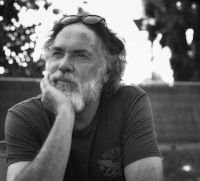
Jean-Jacques Delannoy
The analysis of the geomorphological context of archaeological sites is at the heart of my current work. More specifically, attention is paid to the reconstruction of the physical landscapes contemporary with the periods of frequentation as well as to the identification of human traces from the study of morphologies. This approach is part of an integrated study of archaeological sites and the concept of anthropogeomorphology. This approach is conducted on European Palaeolithic sites (Chauvet cave, Garma cave, etc.), open-air sites in the south of France and on Aboriginal sites in Australia (Arnhem Land, Kimberley, Gippsland) and British Columbia. Professor of geomorphology at the University of Savoie Mont Blanc, founding member of the EDYTEM laboratory, my research is also part of a senior chair of the “Institut Universitaire” de France and the Centre of Excellence on Biodiversity and Heritage of the Australian State (CABAH).
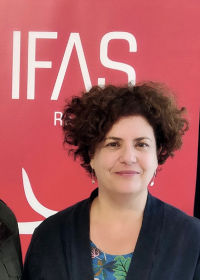
Sophie Dulucq
Sophie Dulucq, professor of contemporary history at the University of Toulouse – Jean Jaurès, has been director of IFAS-Recherche (French Institute of South Africa, UMIFRE 25) since 2019. Her research interests include cultural history and the production of knowledge in a colonial context.
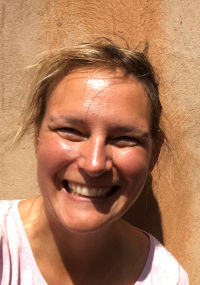
Mélanie Duval
Specialised in heritage and tourism geography, Mélanie Duval is the coordinator of the COSMO-ART project. She is a researcher at the Edytem UMR 5204 CNRS Laboratory (University of Savoie Mont Blanc, France) and an honorary research fellow at the Rock Art Research Institute (University of the Witwatersrand, Johannesburg, South Africa). As a human geographer, her research is concerned with heritage making-process, sustainable tourism and archaeological sites (rock art, lake dwelling remains), particularly in mountain areas (South of France, French Antilles, Alps, Southern Africa). Within systemic and comparative approaches, she analyses the dynamic balance between heritage processes and tourism issues, with a focus on stakeholders’ interplay and the role of local communities.
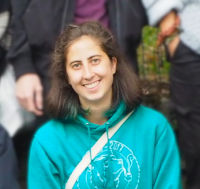
Anaïs Empereur-Buisson
Currently doing a master’s degree in Prehistory in Bordeaux, I joined the COSMO-ART project as part of my end-of-study dissertation, which is devoted to the study of rock-art conservation in Wonderwerk cave (Northern Cape, South Africa).
It will be an opportunity for me to get out of the framework of Franco-Cantabrian caves’ art, and to discover that of southern Africa, as well as to learn more about conservation and taphonomy!

Marie Forget
Lecturer in Geography at the University of Savoie Mont Blanc, I am part of the interdisciplinary laboratory Edytem. My research is mainly focused on social construction of transversal resources (Energy, Water and Land). It focuses on the exploitation and preservation of these resources in a context of transition. I analyze and study territorial dynamics from local to global scales as well as the roles of mountain territories in energy transitions. My fields of study are centered on the Andes (Argentina, Bolivia, Chile, Peru and Colombia), the Alps, the Massif Central and the Iberian Peninsula. My research is part of the field of environmental humanities, seeking to decompartmentalize knowledge by sharing disciplinary know-how on transversal issues. In this project I’ll be contributing to the analyses of small scale mining and large scale project interfering with heritage.

Christophe Gauchon
Christophe Gauchon (University Professor, University Savoie Mont Blanc, EYTEM) is a geographer. He studied the frequentation and development of caves in the French mountains and then extended his field of analysis to include the development of tourism, the processes of heritage-making and the logic of protection, with a particular interest in the place and use of toponymy in the logic of heritagization. His research on the underground world has led him to study the modalities of articulation between the protection and valorisation of rock art sites, mainly in the European context.
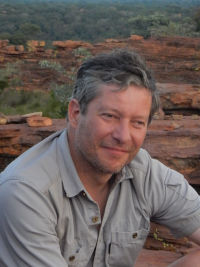
Stéphane Hœrlé
Stéphane Hœrlé is a researcher in material sciences. He is an honorary research fellow with PACEA UMR 5199 CNRS (University of Bordeaux, France) and the Rock Art Research Institute (University of the Witwatersrand, Johannesburg, South Africa). His research interests include the dynamics of rock art site transformation through natural factors and human uses, with applications to the conservation and management of sites.
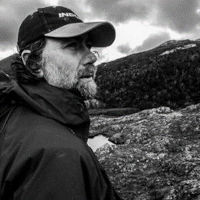
Stéphane Jaillet
Stéphane Jaillet (Research Engineer CNRS) is geomorphologist, speleologist and cartographer. He specializes in the study of karst and underground networks speleogenesis. After a PhD (University Bordeaux 3, 2000) on the covered karst of Barrois (Lorraine area), he joined the University of Nancy 1 and in 2004, the CNRS (EDYTEM laboratory, University of Savoie Mont Blanc) in order to develop the platform Images&5D (Cartography, Topography, Imaging and 3D). This technology platform is specialized in 3D analysis tools, including terrestrial lidar (high mountain, mountain and karst underground) and photogrammetry.
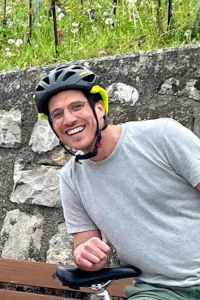
Loïc Jeanson
I’m First Assistant in Digital-Humanities at the University of Lausanne. I teach for the Masters Informatique pour les Sciences Humaines (Computer Science for the Humanities) and Humanités Numériques. My teachings are about modelling geometries and/or concepts in the humanities. I investigate the transformations occurring when digital practices meet the humanities. Through practices in archaeology and history of sciences and techniques, I contribute to the development of digital processes. My research in history of astronomy allows me to experiment with digital tools and is a very fertile field to experience their strength and limits.
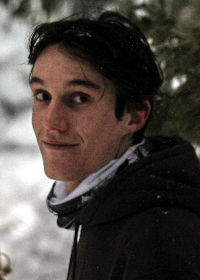
Antoine Latarge
Throughout my formation, first at the University of Geneva (UNIGE) and then at the University of Savoie Mont Blanc (USMB), raised my interest in academic research. After a Bachelor in Geography and Political Science I refocused my studies on the mountains, an environment that was driving me, by joining the Geography and Mountains Master program. I concluded it with an internship at the interdisciplinary laboratory EDYTEM, in the research team formed by Mélanie Duval, Marie Forget and Hugo Quemin. This was an opportunity to discover Namibia and its rock art sites, geoheritage initiatives, mining activities… This experience initiated my curiosity about southern Africa and more specifically on its conflict dynamics between environmental preservation and mining activities. At last, this led to a doctoral research project, that began in October 2024.
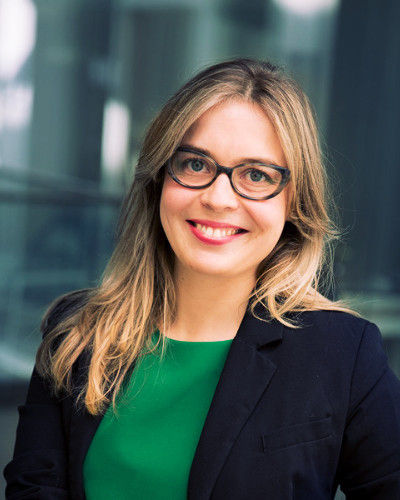
Annael Le Poullennec
Annael Le Poullennec is a Anglicist focusing on South African cinema. An associate researcher at Institut des mondes africains (CNRS-IRD-EHESS-EPHE-Paris 1-Aix Marseille Université), she has been director of IFAS-Research (UMIFRE 25) since September 2023. Her current research revolves around issues of genre and the land question, gender and self-representation, as well as heritage and memory, in South African contemporary cinematic representations.
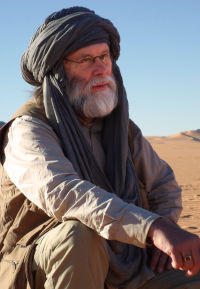
Jean-Loïc Le Quellec
Emeritus Research Director at the Institute of African Worlds (IMAf, UMR CNRS 8171 – IRD 243); Honorary Fellow of the School of Geography, Archaeology and Environmental Studies, University of the Witwatersrand, Johannesburg; 1st Burkhard Grand Prize for Archaeology in 2009, President of the Friends of Saharan Rock Arts (International Federation of Rock Art Organisations). I am interested in the rock images of southern Africa, the Horn of Africa and the Sahara, from a methodological and documentary point of view as well as in their relationship with present and past mythologies, and their study as an archive that can contribute to the history of the settlement of the continent.
Christine Maury
With a degree in Scientific and Technical Information Management, I worked in several institutions (hospitals, adult education centres) before joining the CNRS in 2002. I was recruited to help set up the UMS Quetelet, a forerunner in archiving, promoting and making available social science research data.
I joined EDYTEM in 2011, where I am part of PoLe PIST (Scientific and Technical Information platform), which aims to help the laboratory’s members with support, management and access to scientific information, and in particular with the implementation of good practice in terms of OPEN DATA and OPEN SCIENCES. It is in this context that I am taking part in the COSMO-ART project.
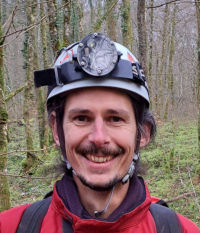
Julien Monney
Julien Monney is an independent researcher, affiliated to EDYTEM. He is a rock art specialist, with a background in prehistoric anthropology. His main focus of research is on the human-environment interactions as mediated by rock art, and, more broadly, on how rock images interplays with past and present societies. This led him to question rock art from a spatial (GIS), temporal (chronology) and anthropological perspective in different geographical contexts: Upper Palaeolithic rock art of South east France (Cosquer, Points cave, etc.), pre-Columbian engraved rocks of the Lesser Antilles (Guadaloupe) and now rock art of southern Africa.
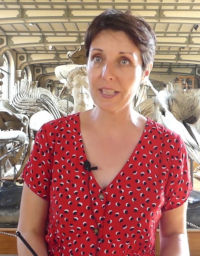
Anne Nivart
After defending her PhD on archaeological museums, Anne Nivart was recruited as a research engineer at the National Museum of Natural History, Paris. She continued her research in Namibia from 2006 in a multidisciplinary team between museology, archaeology and anthropology in partnership with the National Museum of Namibia. Her research topics include the process of Heritage making and museum studies.
In 2009, she was appointed head of the first collection management service of the National Museum of Natural History. From 2017 to 2020, she was delegate for movements and acquisitions of collections at the MNHN. At the same time, she pilots the MNHN Nagoya taskforce. She has participated in several European programs related to the Dissco (DIstributed Systems of Scientific COllections) infrastructure. As a member of the CETAF (Consortium of European TAxonomy Facilities) regulations and legislations group, she participated in the development of the code of conduct and good practices for the implementation of the Nagoya protocol, the first code recognized by the European Commission. Since 2021, she is project manager for of Museums and Dialogue between Science and Society at the Ministry of Higher Education and Research.
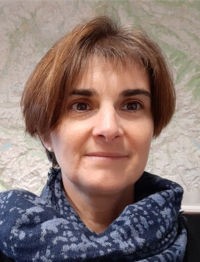
Cécile Pignol
Geographer, cartographer or sedimentologist, I am an engineer specialized today as a Data librarian of a wide spectrum of data. I am the geoscience data reference of EDYTEM laboratory and I am interested in the exploitation of data within the framework of Open Science. I accompany researchers in the FAIR process, throughout their project by a Data Management Plan and globally all the data life cycle. I try also to stay as close as possible to scientific methods (sampling collect, analysis description & metadata standard, vocabularies) and I participate in the design of databases in an approach of perennity and traceability of research practices.
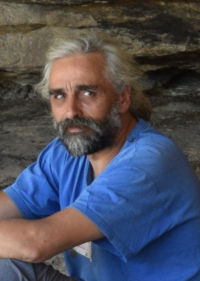
David Pleurdeau
David Pleurdeau is a lecturer at the MNHN, member of the UMR 7194 – Histoire Naturelle de l’Homme Préhistorique (MNHN-CNRS-UPVD). As a prehistorian, he works more particularly on the technical behaviours associated with the emergence and development of Homo sapiens in sub-Saharan Africa. He is in charge of the Archaeological Mission in Namibia (MEAE) and also co-leads international projects between the MNHN and the Hebrew University of Jerusalem on the common themes of their research in Ethiopia. In terms of teaching, he is co-responsible for international mobility within the MNHN’s Master Quaternary and Prehistory and the International Master & Doctorate in Quaternary and Prehistory (Erasmus Mundus).
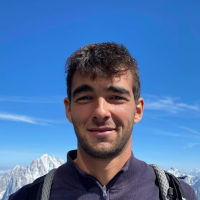
Hugo Quemin
Following his graduation from a BTS (HND) in Tourism in 2016, Hugo, 25 y.o., goes to travel for two years. Although he doesn’t realize it, it is the beginning of a particular attraction for the observation of the differences between the world’ s places, as well as for the analysis of the importance of globalization in order to grasp what he encounters – places as well as mentalities. Convinced of the relevance of academic research, Hugo moved to the USMB (University of Savoie Mont-Blanc), where he obtained a degree in geography and started a Master’s program whose research project is part of COSMO-ART. In 2022, under the watchful eye of Mélanie Duval, he spent three months in South Africa, mainly in the vicinity of Kimberley, in order to study the tourism of a rock art site – Wildebeest Kuil – and the multiplicity of past, present and future social issues that revolve around it.
For the rest of the project, Hugo will do a year of Master 2 focused on the preservation and valorisation of rock art sites in the Erongo Massif, Namibia. The objective of these two years of Master’s studies is to prepare a doctoral research project that should begin in September 2023. This research will focus on putting into perspective the situations observed on the South African and Namibian sites of the project and will be directed by Nadia Belaïdi (EA UMR 7206) and Mélanie Duval (EDYTEM UMR 5204).
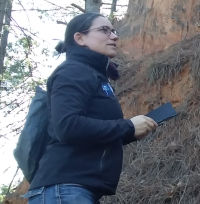
Hélène Salomon
As a prehistorian at the CNRS (EDYTEM laboratory), I am investigating uses of colouring materials during Palaeolithic times by late Neanderthals and early Anatomically modern Humans in Western Europe. Looking for the diverse exploitations of colouring materials in domestic, funeral and art contexts, I undertake the study and analysis of the whole processing sequence of colouring minerals and other productions involving theses minerals. From the procurement to the discard, these resources recorded histories of cultural, technical, functional and territorial choices that left multiples traces. From socio-cultural production to landscape uses, these researches show the inventions and trends among Neanderthals and AMH populations.
South Africa
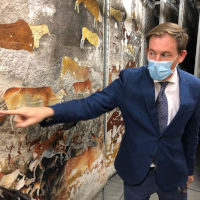
Sam Challis
Sam Challis is Head and Senior Researcher at the Rock Art Research Institute, University of the Witwatersrand. His focus is on the interaction between hunter-gatherers, pastoralists and farmers, as well as Europeans, as expressed in rock art around the world. His DPhil at Oxford focused on the acquisition of horses by creolized raider groups in the nineteenth-century, and his research programme in the mountains of Matatiele in the Eastern Cape, aims to redress the imbalance of this neglected former-apartheid region while training local community Field Technicians.
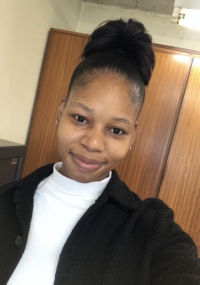
Zola Daniels
Zola Daniels obtained her Honours degree in Archaeology from Sol Plaatje University in 2024. Her dissertation was titled: A Gendered Reading of Southern African Rock Art at Giant’s Castle, UKhahlamba-Drakensberg, supervised by Dr Lourenço Pinto. Where she looked at the absence and the role of women in rock art and in San belief systems.
Zola is currently doing her internship at the KwaZulu-Natal Museum, South Africa. She is also doing her Masters in Archaeology at Sol Plaatje University, dissertation titled: Archaeology and Rock Art Education: A Cross-Cultural Examination of Curriculum Integration in France and South Africa from 1994 till present, supervised by Dr Lourenço Pinto and Professor Amanda Esterhuysen. Where she will analyse how rock art has been incorporated in the school curriculum. Zola has had the pleasure of being part of IRN RAHMSA Training Workshops in Namibia and France.
Zola has had the pleasure of being part of IRN RAHMSA Training Workshops in Namibia and France.
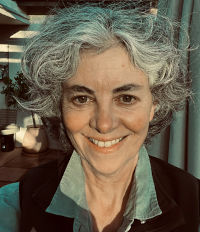
Amanda Esterhuysen
Prof. Esterhuysen research interests reside in the recent historical past and in contemporary issues affecting the practice of archaeology. This interest grew from a wide range of practical archaeological experiences encountered whilst working on education and heritage projects, and from her concern that archaeology should contribute towards building a more comprehensive understanding of recent history and the formation of modern identities in South Africa. Her involvement with the Heritage Management sector, and Ndebele communities in Limpopo Province turned her eye towards issues affecting communities and the profession of archaeology. She has highlighted weaknesses in heritage compliance, which allows unscrupulous developers and government officials to exploit community land and gravesites.
She was appointed by the Minister of Arts and Culture to the Council of the South African Heritage Resources Agency in 2007 (until 2009) and was appointed Chair of the Archaeology, Palaeontology, Meteorites, Heritage Objects and Burials Committee in 2008-2010. She has been appointed twice to a ministerial task team by Ministers of Basic Education in 2000 & 2016 to review, and rewrite the school history curriculum. She has served as the Head of the WITS Origins Centre Museum since 2018.
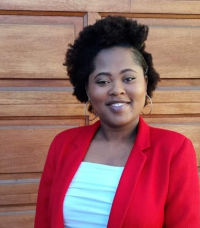
Shanty Joy Fisher
Graduated from the Sol Plaatje University with BA general degree majoring in heritage studies. Also obtained an honours degree from the Sol Plaatje university with specialisation in Heritage studies with a Mini dissertation titled: an exploratory study of the impacts of displacement on the healing practices of the !Xun community at Platfontein, northern cape, South Africa under the supervision of Dr Lourenço Pinto. Currently a master’s student in a joint Master’s program in Rock art and Achaeology and Quaternary studies, with future prospects of studying different rock art sites and their conservation management plans in quest of reviewing then which would result recommendations of better preserving of the heritage sites which in include rock art sites in the world.
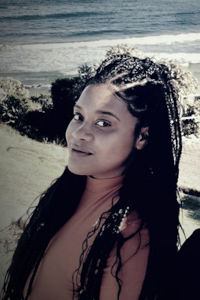
Abenicia Henderson
I am Head of Archaeology at the McGregor Museum and a member of the MINERVA and Kgalagadi Human Origins (KHO) projects. My current research focusses on the landscape and environmental reconstruction of the early 19th century to mid-20th century mining era of Kimberley, using the intact stratigraphic layer of an ash midden as reference. My research interest are the preservation and conservation of heritage-, rock art-, Stone Age- and historical archaeological site.
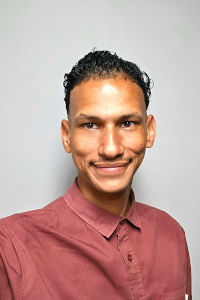
Curtis Jeaven
With a background in the fields of Heritage, Archaeology and History, Curtis Jeaven holds a Higher Certificate in Heritage Studies, and a Bachelor of Arts degree subsequently obtained from Sol Plaatje University. Jeaven is currently a Bachelor of Social Science Honours specialisation in Heritage Studies student at Sol Plaatje University, Northern Cape, South Africa. In respect of professional associations, Jeaven is a member of the South African Archaeological Student Council since 2021. He is a mentee in the Reimagining Heritage, Archives and Museums: Today/Tomorrow Mentorship programme initiated by Institut français d’Afrique du Sud (IFAS) / French Institute and the Embassy of France in South Africa.

Mduduzi I. Maseko
Mduduzi I. Maseko is a Rupert Art Foundation Academic Intern at the University of the Witwatersrand’s Rock Art Research Institute (RARI), where he works closely with the digital lab of the African Rock Art Digital Archive. He holds a Master of Science degree in archaeology, from the University of the Witwatersrand, and has previously worked as a lecturer of archaeology and rock art at the University of South Africa. Mduduzi’s current research focuses on the late Holocene communities of Mpumalanga Province, in South Africa, and he is interested in the integration of different forms of datasets, with rock art as the primary dataset, to re-imagine a past that is more aligned with indigenous forms of knowledge.
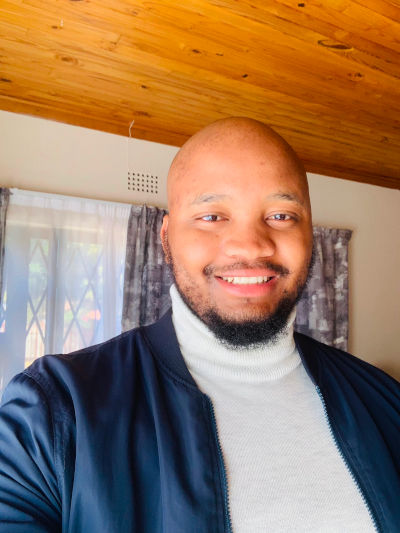
Tshenolo Moletsane
My name is Tshenolo Moletsane, I am 26 years old.
I have completed a Higher Certificate in Heritage Studies and a Bachelor of Arts degree at Sol Plaatje University. I am currently completing my honours degree in Archaeology at Sol Plaatje University on the topic of : An investigation of the effects of environmental factors on the preservation of rock art at Wonderwerk Cave, Northern Cape, under the supervision of Dr Lourenço Pinto.
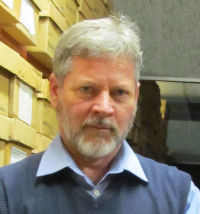
David Morris
Retired Head of Archaeology, now Honorary Research Associate at the McGregor Museum in Kimberley, having also been affiliated with Sol Plaatje University and lecturing modules in its inaugural archaeology and heritage programmes. My principal research interest is in Northern Cape/Karoo rock art, mainly rock engravings. My master’s and doctoral research was centred on the site of Driekopseiland near Kimberley, considered in relation to indigenous perspectives on landscape and materiality and as a powerful place of ritual which was, given that ontological understanding, enhanced by accumulating imagery. From that viewpoint I have conjectured mechanisms behind variability in the sites and imagery that do not depend on ethnicity in the first instance. I have participated in developing public archaeology through the Wildebeest Kuil Rock Art Centre, Wonderwerk Cave and other museum and site contexts including displays at McGregor Museum, Mokala Park and Canteen Kopje. Publications include journal articles and co-authored books, on rock art, indigenous perspectives, and the history of archaeological research. I was recently elected to serve as President of the South African Archaeological Society (2022-4).
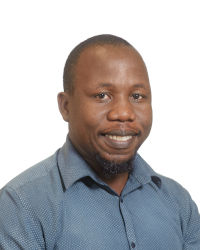
Ndukuyakhe Ndlovu
Dr Ndukuyakhe Ndlovu holds a PhD in Archaeology which he attained from Newcastle University in the United Kingdom in 2013. Prior to that, he had successfully completed a BA Degree majoring in Archaeology and Geography (2000), BA Honours Degree in Climatology and Environmental Studies (2001), a Postgraduate Diploma in Science (Rock Art Studies – 2003), and an MA (Anthropology – 2005) from the University of the Witwatersrand and Rhodes University respectively. Dr Ndlovu’s research is focused on three areas: Southern African rock art, heritage management in Southern Africa, and the political history of archaeology.
Dr Ndlovu has worked in both government and the higher education sector over the past 22 years. He is currently the Manager for the Department of Archaeology at the South African National Parks. Prior to that, he was employed as the Senior Lecturer during which he taught archaeology at the University of Pretoria. Dr Ndlovu is a well published scholar, with over 30 publications in accredited journals and books. Over the years, he has supervised 15 Honours students, nine Masters students (three of whom attained distinctions), and 2 PhD graduates. He was previously appointed on a five-year term as an Editor-in-Chief for the South African Archaeological Bulletin, one of the premier academic journals in the African continent, thus playing a critical role in the production of archaeological knowledge as well as transforming the discipline by giving opportunities to African scholars. He became the first African in a 70-year history to hold such a position. Dr Ndlovu has also been appointed to serve on Editorial Boards of esteemed journals in South Africa and around the world. He previously served in various Boards within his discipline of archaeology and the heritage management fraternity while also delivering many conference presentations around the world.

Yola Nzimela
I am an Academic Intern at the University of Witwatersrand interested in Rock Art of South Africa’s past societies. My interests also lie in understanding archival institutions’ collections of ethnographic materials and how they are curated. I completed my Honours Project, “Beads and material objects: iPhephethu, iRhabi, and iPhotho of the Ndebele People of South Africa” in 2021 and I am currently doing my Master’s research on Divination collections within museums intending to develop curatorial protocols that can be applied to the curation of these specific collections.
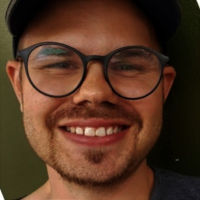
Lourenço Pinto
Qualifications: BA Archaeology, History of Art and Anthropology; BA (Honours) Heritage Studies, MSc Rock Art Studies (University of Witwatersrand), PhD in Archaeology (University of Witwatersrand)
My Ph.D. dissertation entitled ‘Understanding Variation: A Stylistic-Ethnographic Analysis of Rock Art from the Makgabeng Plateau, Limpopo Province, South Africa’, focused on the interaction between two rock art corpora and multiple cultural groupings. I have lectured undergraduate and postgraduate courses at the University of the Witwatersrand and the University of Pretoria. During my tenure at the University of Pretoria, he was promoted from junior lecturer to lecturer. I have worked at the KwaZulu-Natal Museum, in Pietermaritzburg, as an assistant collections manager.
I am committed to heritage community involvement in South Africa. I was the chairperson of the Archaeological Society of South Africa (Northern Branch) from 2016 to 2018. Currently, I am committee member of the Archaeological Society of South Africa (Trans-Garib branch) and I am keen to assist in growing the Society.
From 2017 to 2018, I co-facilitated a National Geographic palaeoanthropology outreach programme. I have worked with various communities from different social backgrounds. Working with these communities has allowed me to share his passion for southern African heritage and the importance of preserving that heritage.
I am an honorary research fellow of the Palaeo-Research Institute, University of Johannesburg Institute. I was appointed as a Lecturer at Sol Plaatje University in February, 2018, and I teach undergraduate and postgraduate Heritage Studies and Archaeology modules in the Heritage Department. My research interests include the rock art of South Africa, heritage studies and decoloniality.

Gilbert Pwiti
Specialised in the management of rock art sites focussing on interpretation, community use and community engagement in rock art sites management. Currently Professor of Archaeology and Heritage Studies at Sol Plaatje University, Kimberley. Have previously taught Archaeology and Heritage Management at the University of Zimbabwe, the Institute of Archaeology, University College London and the University of Botswana. Research interests have included investigation of conflict resolution between formal heritage management systems and traditional community-based management systems in the context of rock art heritage values in relation to community spiritual values vs formal management values.

Mbongeni Andries Tembe
By profession, I am an archivist specializing in the preservation and accessibility of archival collections. My current position is as a senior technician at the Rock Art Research Institute at the University of Witwatersrand where I work with the African Rock Art Digital Archives. My research interests include digital preservation, oral history records, and audio-visual collections.
COSMO-ART brings together 17 scientific partners in 4 countries.
Australia

Centre for Rock Art Research + Management
The Centre for Rock Art Research + Management (CRAR+M) aspires to be a leader in rock art conservation and management by research-driven advocacy for its priceless heritage values. While CRAR+M focuses on Australian rock art we produce research outcomes of international significance. Researchers at CRAR+M are involved in projects with Aboriginal and Torres Strait Islander communities in Australia as well as working with rock art in a number of international contexts.
France
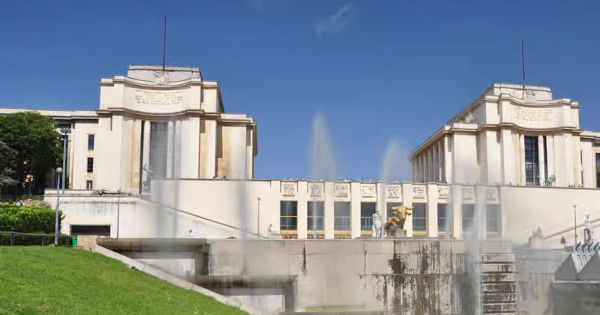
Éco-Anthropologie UMR 7206
The UMR Éco-Anthropologie (UMR 7206) is a joint research unit of the Centre national de la recherche scientifique (CNRS), the Muséum national d’histoire naturelle (MNHN) and the University of Paris. The unit is attached to the INEE institute of the CNRS and to the « Man and Environment » department of the MNHN. The UMR Éco-Anthropologie proposes an original approach by studying how humans – and their closest cousins the primates – perceive and act on their environment and shape cultures, and how environments and cultures shape human biology, notably over time through our evolution.
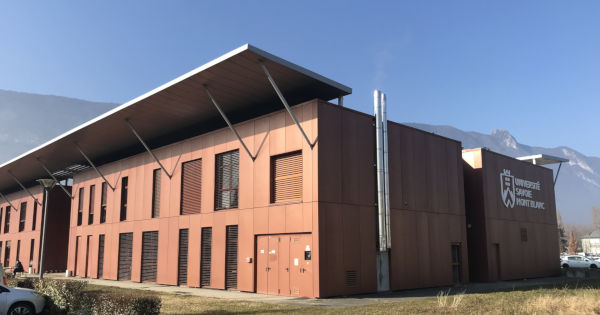
EDYTEM UMR 5204
EDYTEM is a multidisciplinary research unit affiliated to the French National Centre for Scientific Research (CNRS) and the University Savoie Mont Blanc (USMB). It brings together researchers in the geosciences (geology, hydrogeology, geomorphology), in the humanities and social sciences (geography, sociology, economics sciences) and in the environmental and green chemistry with the aim of solving environmental and societal problems through an interdisciplinary vision of mountain areas challenges.
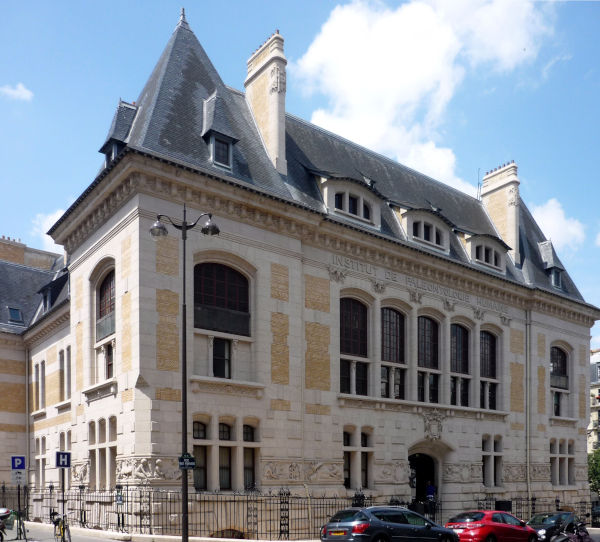
HNHP UMR 7194
The UMR 7194 “Histoire Naturelle de l’Homme Préhistorique (HNHP)” is a multi-site UMR – Musée de l’Homme (Paris), Institut de Paléontologie Humaine (Paris), Université de Perpignan Via Domitia (UPVD, Perpignan) and the Centre Européen de Recherches Préhistoriques de Tautavel (Tautavel) – under the triple supervision of the CNRS, the Muséum National d’Histoire Naturelle and the UPVD. The research of the UMR HNHP is focused on the study of the biological and behavioural evolution of hominins over time, by placing them in their chronological, environmental and climatic context in different geographical areas. Multidisciplinary – archaeologists, anthropologists, archaeozoologists, paleobotanists, paleontologists, Quaternary geologists, geographers, archaeometers and geochronologists – it favours a global, patrimonial and comparative approach to the sites studied in many regions of the world.
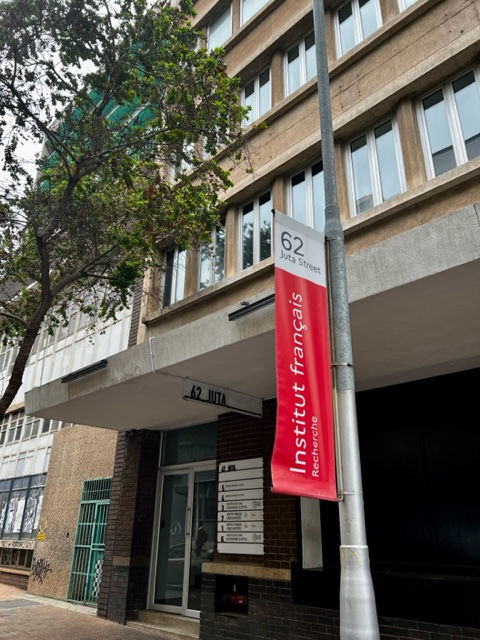
Institut Français d’Afrique du Sud (IFAS-Recherche)
IFAS-Research, a joint unit of the French Overseas Research Institutes (UMIFRE), encourages scientific research (collective or individual) through annual calls for applications. Every year, it supports around thirty African specialists from a range of disciplines (history, geography, anthropology, archaeology, political science, etc.). It also helps European and African researchers to do fieldwork, organise scientific events (colloquia, workshops, seminars, etc.) and disseminate their findings (publication support, short films, etc.).
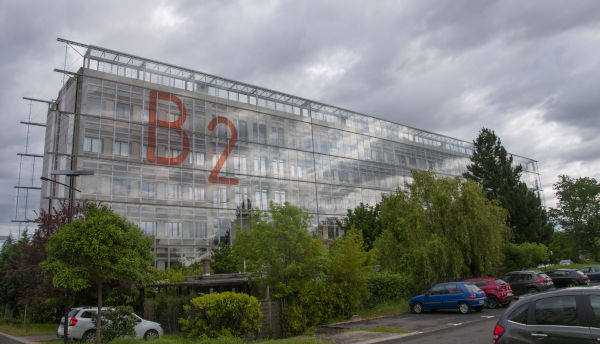
PACEA UMR 5199
PACEA is a joint research unit affiliated to the CNRS (Ecology and Environment Institute), the University of Bordeaux (Department of Archaeological Sciences) and the Ministry of Culture. The research carried out at PACEA focuses on the evolutionary, cultural and symbolic history of past populations in relation to environmental changes from the origin of the genus Homo to very recent periods. This broad theme is supported by a wide range of specialists including: archaeologists, bioarchaeologists, funerary archaeologists, palaeoanthropologists, palaeopathologists, prehistorians, rock art specialists, archaeozoologists, palaeogeneticists and geoarchaeologists.
PACEA contributes to COSMO-ART mostly with the study of the vulnerabilities of rock art sites and the improvement of site heritage management, through the work of Catherine Cretin, who coordinates project Work Package « Vulnerabilities and mitigation strategies » (jointly with David Morris), and Stéphane Hœrlé who studies rock art conservation.
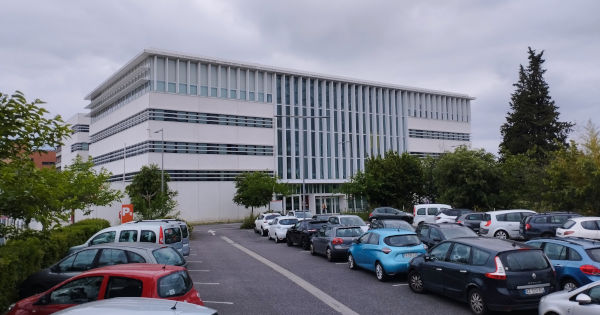
TRACES UMR 5608
TRACES is a laboratory (UMR 5608) of the CNRS, the University of Toulouse II Jean-Jaurès and the Ministry of Culture (Direction générale des patrimoines et de l’architecture – Sous-direction de l’archéologie), in agreement with the EHESS, the INRAP and the archaeology service of Toulouse-Métropole. Its name comes initially from an acronym, which was developed as Travaux et Recherches Archéologiques sur les Cultures, les Espaces et les Sociétés. With approximately 200 members, the UMR is involved in research, mediation with the general public and student training, on national and international scales. Techniques and technologies, material production, settlement history, forms of habitat, economic systems, symbolic and funerary expressions, are thus examined from prehistory to the end of the medieval period, notably in Eurasia and Africa.
Namibia
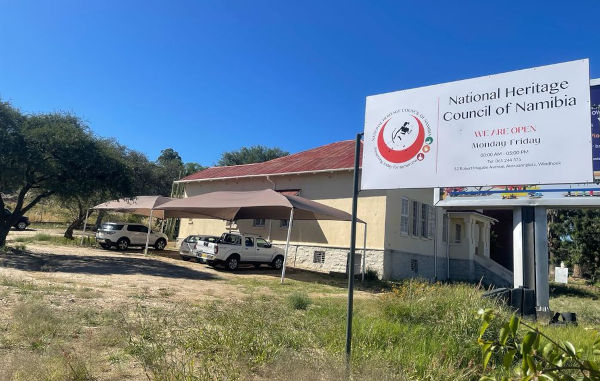
National Heritage Council of Namibia
The National Heritage Council of Namibia is a government organization responsible for the protection of Namibia’s natural and cultural heritage. The Institution has been in existence since 2005 when it replaced the National Monuments Council. Its vision is to reconcile cultures and share the benefits of Namibia’s heritage and growth in the diverse cultural identities in Namibia.
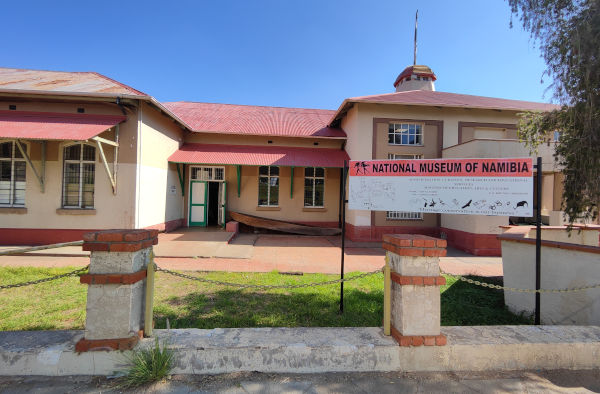
National Museum of Namibia
The National Museum of Namibia is situated in Windhoek, the capital of Namibia. The National Museum of Namibia maintains extensive collections of objects related to Namibian natural history, cultures, history, and archaeology. It maintains two active display centres, the Owela Museum (displaying Namibia’s natural history and certain traditional cultural practices) and the Alte Feste Museum (displaying Namibia’s colonial and more recent history). To improve its collections and associated information, the National Museum of Namibia has active research programmes with one research department in Natural Sciences (with various animal collections) and another in Social Sciences (with various collections).
University of Namibia
The University of Namibia (UNAM), is the country’s premier institution of tertiary education. It consists of 12 campuses country-wide and four faculties (Agriculture, Engineering & Natural Sciences; Commerce, Management & Law; Education & Human Sciences; Health Sciences & Veterinary Medicine). This outreach makes UNAM a truly community-based institution, renowned for its academic excellence, outstanding research, and community development projects. It is a diverse institution with a student population from 41 countries around the world. Although a relatively young university, it has grown to support a student population of over 30 000.
South Africa
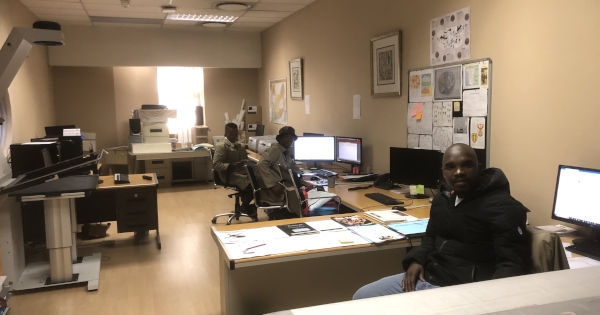
African Rock Art Digital Archives
The South African Rock Art Digital Archive (SARADA) is a digital archive houses collections managed by the Rock Art Research Institute. Its goal is to digitise rock art collections on the African continent, make them available in an easily searchable database, in so doing conveying the importance of protecting and preserving the continent’s rich archaeological heritage and facilitating ongoing research and interest in its fascinating past. Collections include slides, historical documents, tracings, redrawings, renderings, prints, sketches and photographs. SARADA includes collections owned by the Analysis of Rock Art of Lesotho (ARAL) project, Iziko Museums of Cape Town, Natal Museum, National Museum (Bloemfontein), University of Cape Town (UCT), the University of South Africa (UNISA), RARI and Janette Deacon (private collection). SARADA has the purpose of furthering research, education and site management, thereby helping promote the development and reconstruction of Southern Africa’s history.
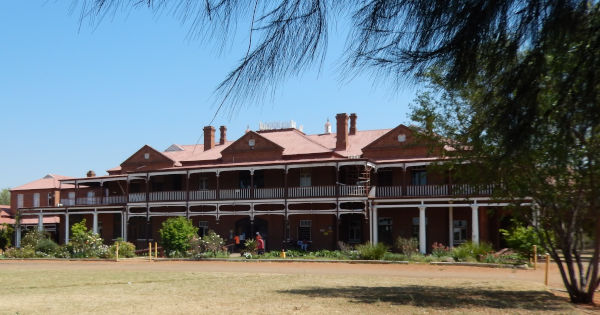
McGregor Museum
The McGregor Museum in Kimberley, is a multidisciplinary museum and a primary research institute in and for the Northern Cape in fields of natural and cultural history (including zoology, botany, general history, South African struggle history, archaeology, social anthropology). It has a role in articulation with the School of Heritage which is to be a part of the Sol Plaatje University). It curates important collections and archival material and, on the basis of its collections and research activities, performs educational and outreach functions to the community locally and throughout the province. Research programs include international collaborative projects.
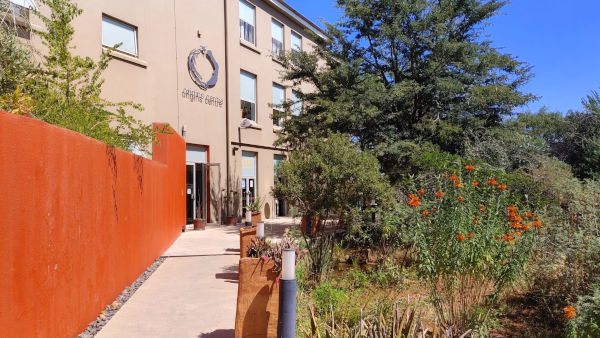
Origins Centre
The Origins Centre, opened by South African President Thabo Mbeki in 2006, is a museum dedicated to exploring and celebrating the history of modern humankind. It contains evidence of ancient stone tools, artifacts of symbolic and spiritual significance, and examples of the region’s visually striking rock art. It also captures the impact of the colonial front and highlights examples of resistance. The Origins Centre boasts an extensive collection of rock art from the Rock Art Research Institute (RARI) at Wits, affording visitors the opportunity to view some of the richest visual heritage found in South Africa and to learn about its history and meaning. Origins Centre hosts a research component, The Mapping Africa’s Endangered Archaeological Sites and Monuments (MAEASaM) project, which aims to undertake systematic analysis of the state of heritage sites through the interpretation of satellite and aerial images in conjunction with regional maps and archival databases.
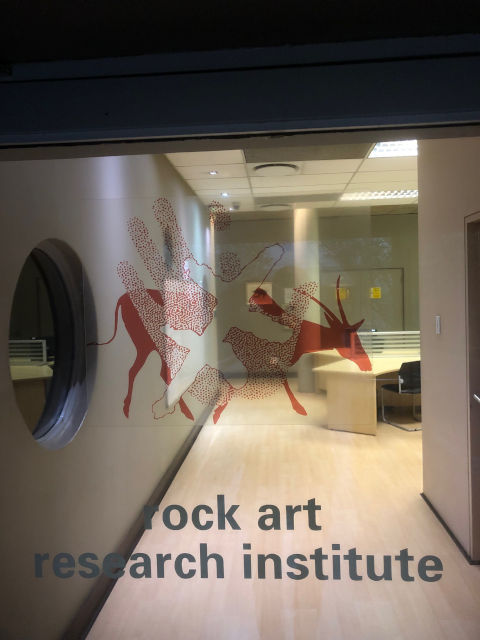
Rock Art Research Institute
The Rock Art Research Institute is one of the largest specialist rock art institutions in the world, attracting students and researchers from around the world. It is a leading centre for rock art training and offers undergraduate and postgraduate courses in rock art recording, interpretation and management. It is also active in rock art conservation and in the development and management of rock art tourism in South Africa. A major recent initiative is the establishment of the Origins Centre in 2006, a rock art museum facility located in Johannesburg on the Wits University campus. RARI helped to develop two of South Africa’s premiere public rock art sites: Game Pass shelter in Kamberg Nature Reserve, KwaZulu-Natal and Wildebeest Kuil outside Kimberley in the Northern Cape. As the Institute has grown, it has sought to serve multiple regions of the African continent. Currently projects are underway in all South African Provinces as well as in Zimbabwe, Swaziland, Lesotho, Botswana, Mozambique, Zambia, Malawi, Tanzania and Kenya. The ARADA digital archive hosts collections from several of these nations.
SANParks
South African National Parks (SANParks) is the body responsible for managing South Africa’s national parks. SANParks was formed in 1926, and currently manages 19 parks in seven of the nine provinces of South Africa with a total area of just over 4 million hectares comprising over 3% of the total area of South Africa. SANParks is a public entity under the jurisdiction of the Department of Environmental Affairs, where inclusive conservation as opposed to previous policies of exclusion, are central to advancing the policies in line with the National Development Framework for Sustainable Development and the national Development Plan. The National Environmental Management Protected Areas Act mandates SANParks to create destinations for nature-based tourism in a manner that is not harmful to the environment. It is recognised as a world leader in conservation and protected area management.

Sol Plaatje University
Sol Plaatje University (SPU) offers academic programmes in fields that meet the needs of the South African thrust to develop a nation that is proud of its heritage and roots. In developing the focus for its academic disciplines (data science, heritage studies, paleo-sciences, creative writing in African languages…), SPU has looked to the needs, competence and characteristics of the Northern Cape region. Furthermore, in an era of concern about global warming and the threat to arid regions like the Northern Cape, SPU is developing future programmes in agricultural sciences with a focus on water-stressed conditions.
University of Pretoria
The University of Pretoria is a multi-campus public research university in Pretoria. Organised into nine faculties and a business school, namely Economic and Management Sciences, Education, Engineering, Built Environment and Information Technology, Health Sciences, Humanities, Law, Natural and Agricultural Sciences, Theology and Religion, Veterinary Science and the Gordon Institute of Business Science (GIBS). The academic programmes are offered in 140 academic departments and 85 research centres, institutes and units. With approximately 53,000 students currently, the University of Pretoria is one of South Africa’s largest research universities.

